| |
Bypass Spain’s biggest cities for small-town experiences in Extremadura
By Tom Adkinson
November 23, 2023
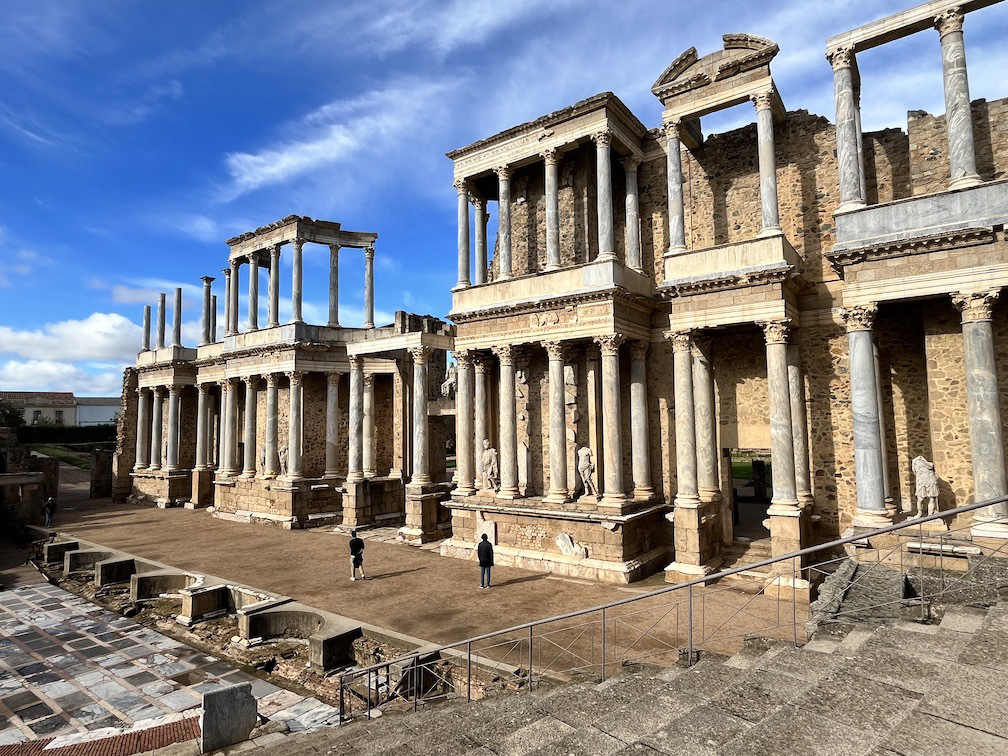
This theater seated 6,000 people when the Roman Empire held sway on the Iberian Peninsula. It is in Mérida, founded in 25 B.C. Image by Tom Adkinson
|
CÁCERES, Spain – Itineraries for most first-time visitors to Spain feature major cities with worldwide reputations – destinations such as Madrid, Barcelona, Valencia, Seville and Bilbao, where the populations range from 5.2 million to 947,000.
However, a strong case can be made for bypassing the urban centers and easing into the hinterlands to towns such as Cáceres, Mérida, Trujillo and Jerez de los Caballeros in the Extremadura region west of Madrid and up against the border with Portugal. The combined populations of these four towns barely would constitute a suburb of Madrid.
While Spain’s big cities offer centuries of history, stunning architecture, renowned restaurants and museums filled with artifacts and art, the smaller towns of Extremadura boast similar reasons to visit, plus easy mobility.
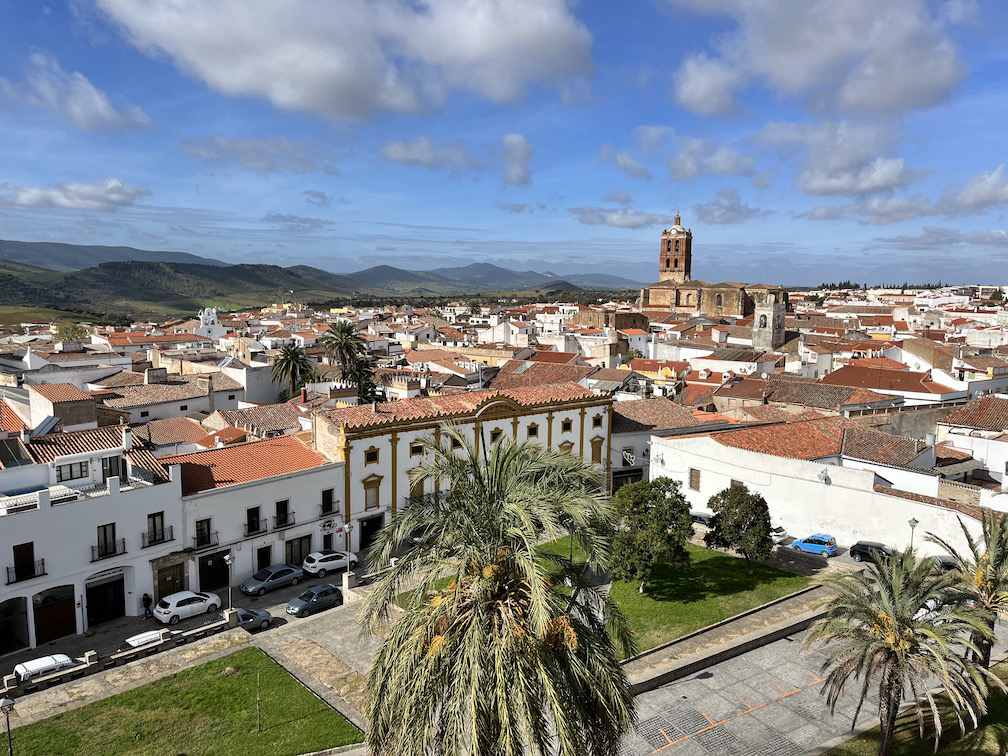
A church tower rises above the red tile roofs of Zafra, population. It was founded as a Roman city, but its name comes from a time of Moorish domination. Image by Tom Adkinson
|
Madrid’s Plaza Mayor is a massive, delightful, crowded circus that attracts thousands of visitors, many of them tourists, every day.
For contrast, the Plaza Mayor in Cáceres is substantially smaller, but it is a place that locals frequent, often pausing for a coffee, wine or meal at outdoor cafes while admiring the city’s fortifying wall, which is the sturdy and impressive leftover from Roman and Moorish occupations.
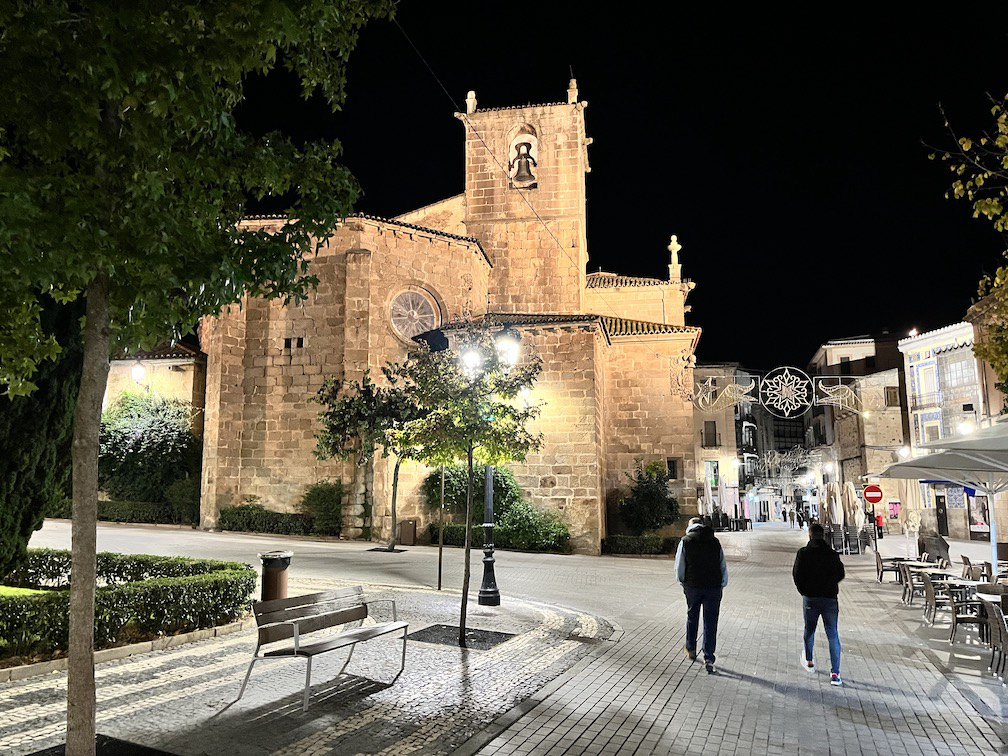
A well-lighted church just outside the fortified walls of Cáceres dominates a night scene on a city street. Image by Tom Adkinson
|
The view from the Cáceres Plaza Major is so impressive that the producers of “Game of Thrones” used one of the city wall’s gates in their hit TV program. (For “Game of Thrones” junkies, the gate became the King’s Landing.) More validation came from UNESCO, which labeled the walled section of Cáceres one of the best-conserved medieval towns in Europe when it bestowed World Heritage Site status.
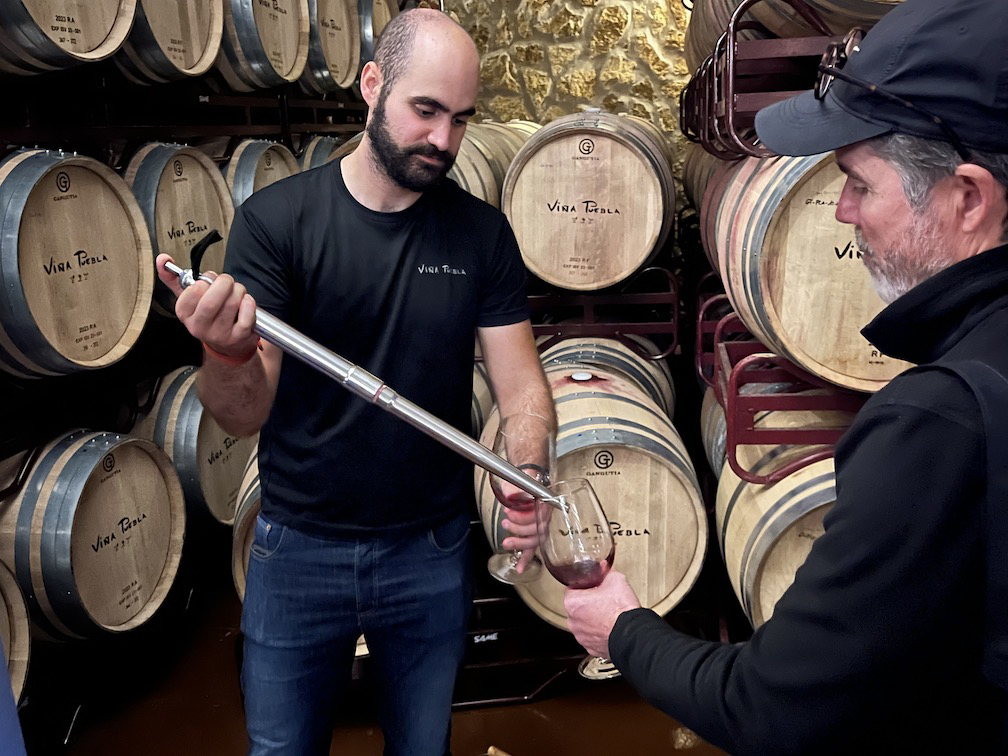
An owner of the Viña Puebla Winery offers a sample to a visitor on a tour of Extremadura vineyards and wineries. Image by Tom Adkinson
|
Extremadura is manageable to explore. It is bigger than Maryland but smaller than West Virginia. It has mountains (Monfrague National Park is especially popular), rivers, lakes and substantial stretches of open land between the towns, castles and monasteries that dot the landscape.
This diverse terrain makes Extremadura appealing to birds (approximately 360 recorded species and about 280 species regularly present or nesting) and consequently to birdwatchers.
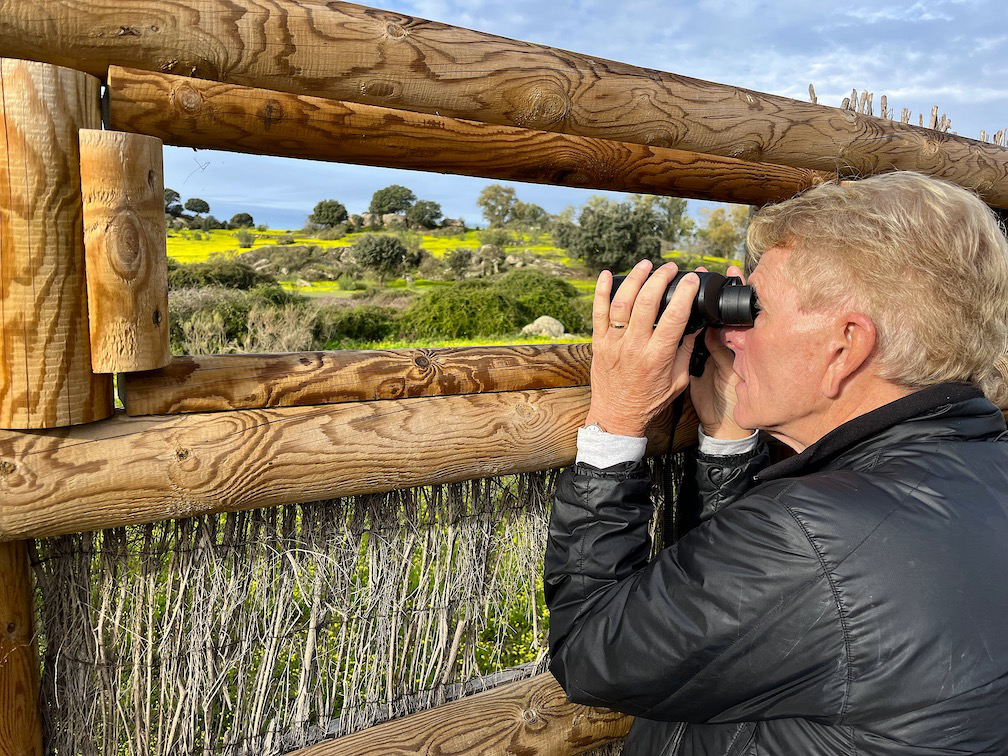
A birder trains his binoculars on shore birds shielded by strategically placed fences. Extremadura has almost 300 species of resident and nesting birds. Image by Tom Adkinson
|
Dedicated birders come to see Spanish imperial eagles, cinereous vultures and other species, and everyone enjoys seeing white storks, whose massive, conspicuous and heavy nests make it easy to watch for them. Spain and Poland are Europe’s two most popular host countries for storks. (Search all you want, but you’ll not see a stork in flight delivering a baby to an anxious couple on the ground.)
A distinctive agricultural landscape called a dehesa will catch your eye as you travel from town to town. Largely open grasslands that either are private or communal property are liberally dotted with oak trees. The oaks are protected and pruned to produce acorns that become a significant food for black Iberian pigs.
The pigs are the source of jamón Iberico, air-dried ham that is sliced tissue thin and served as an appetizer. It sells for premium prices and is so revered that some towns mark a “Ruta del Jamón” to steer you to the best places to buy meats. In addition to the flavorful ham, Extremadura produces popular wines, cheeses and olives, so it is easy to fill a picnic basket.
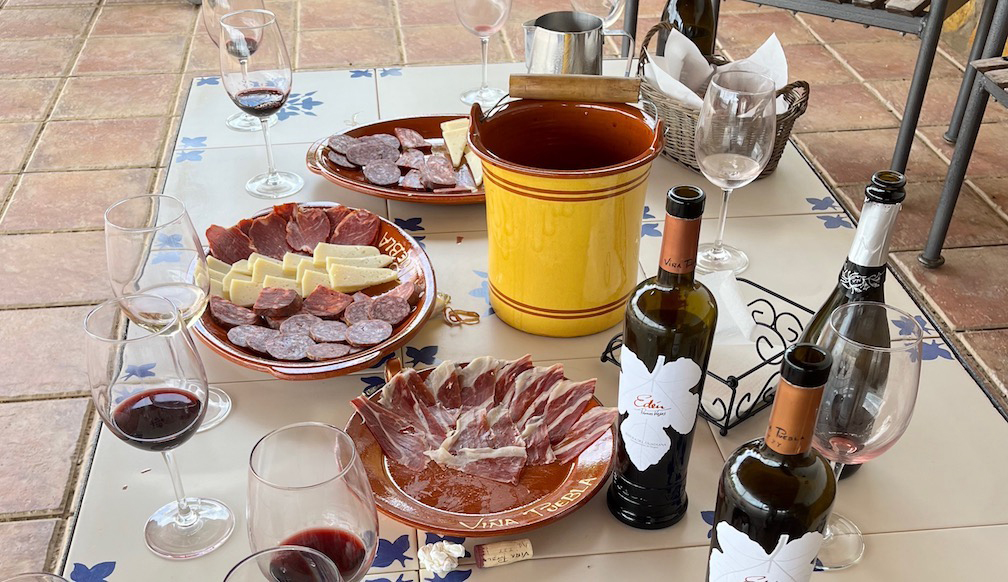
Jamón Iberico, air-dried and thinly sliced ham from pigs fattened on acorns, is a common appetizer, along with other cured meats and local cheeses. Image by Tom Adkinson
|
The ebb and flow of invaders and various cultures through the millennia (Romans, Visigoths, Arabs, Moors, Christians) left enough reminders to occupy an entire vacation. Mérida, now a town of about 60,000 people, delivers one of Extremadura’s most conspicuous reminders of antiquity – a snapshot of the Roman Empire.
Romans founded Mérida in 25 B.C., and it became a major city. Proof lies with a monumental theater seating 6,000, an amphitheater (yes, one for gladiator combat) that could hold 15,000 spectators and one of the largest Roman circuses in the empire, where 30,000 people could cheer on their favorite chariot drivers.
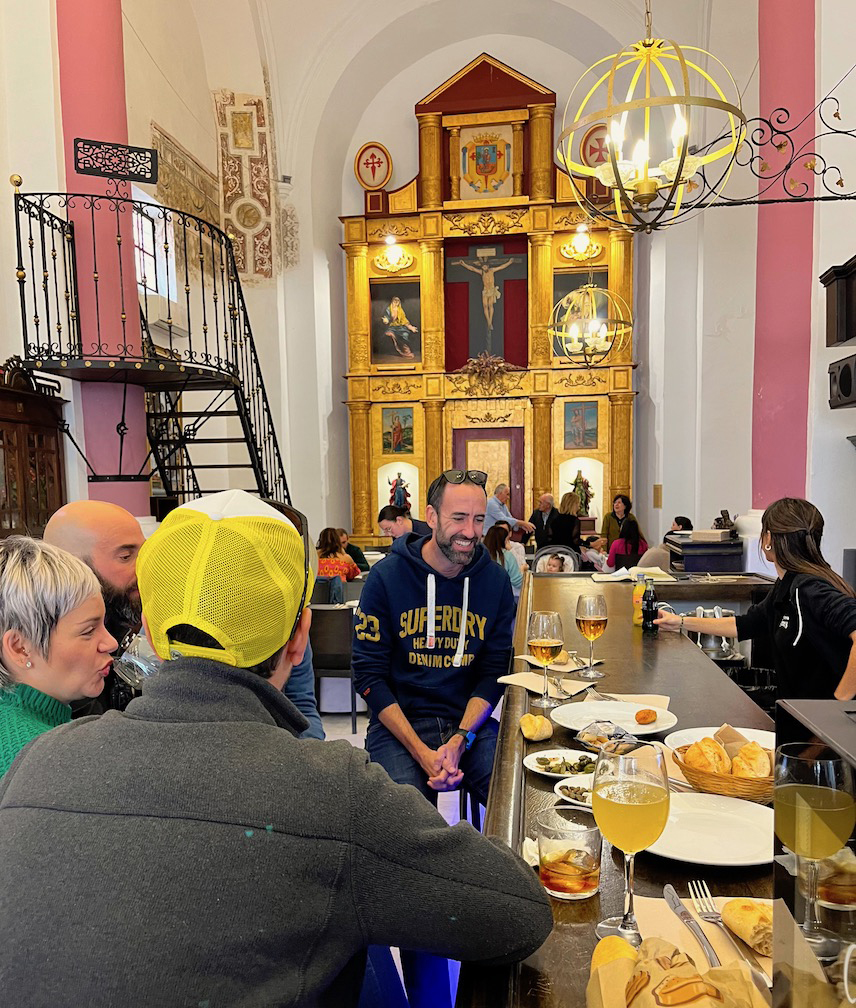
When a church in Jerez de los Caballeros no longer could function as a place of worship, it became a place of food, wine and hospitality called La Ermita. Image by Tom Adkinson
|
A real surprise as you walk through Mérida’s modern streets lined with shops and restaurants is the Temple of Diana, built in the first century A.D. (Of note: Despite its name, it had nothing to do with the goddess Diana. A historian’s comment in 1633 led to an erroneous connection to Diana. In reality, the temple was dedicated to Rome and the emperor.)
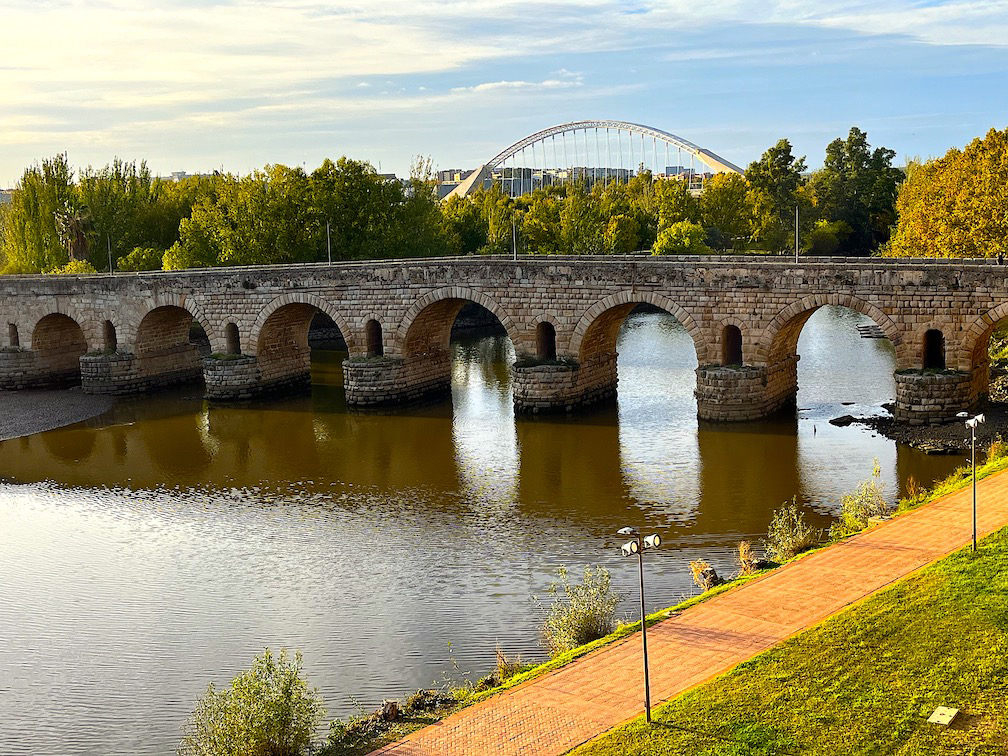
Bridges separated by two millennia stand in Mérida. The one in the foreground was built in the first century B.C. and carried vehicular traffic until 1991. Image by Tom Adkinson
|
Even when night descends, your Extremadura experience doesn’t end – not because of a party scene, but because of a show overhead.
Extremadura is so thinly populated that it is one of the world’s prime stargazing locations. You can end your day with an astral light show far different from the neon light shows of Madrid, Barcelona, Valencia, Seville and Bilbao.
Trip-planning resources: TurismoExtremadura.com and Spain.info
|



